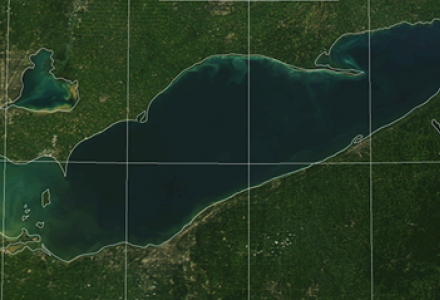
Plastic items --- from bags and bottles to clothing fibers --- are finding their way into the Great Lakes and its tributaries, degrading into tiny pieces and potentially impacting the environment and human health. While the US and Canadian governments have taken steps to deal with some of these microplastics in the form of microbeads, the IJC has made additional recommendations to get the problem under control before it becomes a bigger issue.
The recommendations stem from a 2016 IJC workshop held in Windsor, Ontario, and attended by 33 experts from both countries. Coupled with public comments gathered in October and November, the IJC developed four major recommendations for Canadian and US officials to consider, starting with a binational plan to prevent the plastics from getting into the lakes in the first place. That plan should reflect on the three themes from the workshop: focusing on pollution prevention, education and outreach, and scientific research and monitoring.

There is no silver bullet that can keep plastics out of the Great Lakes, so the recommended binational plan should have multiple approaches and tools. The IJC has suggested that it include policy- and market-based instruments that use scientific research as a starting point, along with education and outreach to the broader public. A solid plan also would include measurable targets and goals to gauge progress, along with periodic reviews and the flexibility to make adjustments as needed. To make sure the plan is successful, the IJC also suggests that Canada and the United States engage with relevant organizations and industries as well as state, provincial, local, First Nation and tribal governments when putting an agreement together so it can lead to more “informed and innovative” solutions.
Those solutions will need a solid baseline. The recommendation for additional scientific research and monitoring is a necessity given that microplastics haven’t been studied as heavily in freshwater environments – and the Great Lakes more specifically – as they have in marine systems. For starters, there is no agreed upon, defined size for microplastics, though the IJC is recommending a widespread adoption of a particle less than five millimeters in size –the size defined by the US National Oceanic and Atmospheric Administration (NOAA). Still, NOAA’s sampling methods don’t include particles smaller than 0.333 mm, and there is an outstanding need to develop methods to analyze sizes that small and standardize the analysis and sampling methods across the basin.

There also are gaps in scientific knowledge of the sources, abundance and distribution of microplastics in the Great Lakes, how they get transported into and around the Great Lakes (from pathways such as runoff, boats, wastewater), and details of how quickly different types of plastic degrade. There also are questions on how microplastics could bioaccumulate in the food web and what sort of toxic impacts that can have on wildlife and human health. This information could help to develop new methods of manufacturing to reduce the amount of microplastics finding their way into the lakes, and new disposal and recycling processes to capture these plastics before they enter the water supply. It also could be helpful in researching alternatives to traditional plastics and what sort of impacts those have on the environment and human health.
Moreover, the IJC is recommending that the governments fund research to compare and analyze the most effective methods and policies to reduce and prevent plastics in the Great Lakes. A variety of programs from several organizations and governments already exist to try to manage and reduce plastics from entering water systems. Most notably, the American Chemistry Council and Canadian Plastics Industry Association are involved in national and international programs to contend with marine plastic pollution. Effective programs from throughout the globe could be compared and brought to bear on the Great Lakes region and its own microplastics battle.
The IJC suggests the governments look into the effectiveness of a mandatory extended producer responsibility program, which would make producers either physically or financially responsible for products from the manufacturing stage through their end-of-life disposal. This can be done through incentives to design a product to reduce waste and improve its recovery, recyclability and reuse. As a side benefit, better product management also could help other forms of pollution throughout the region.

Outreach and education programs also may provide an effective avenue to deal with the problem. Better education on disposing and recycling plastic materials and the impacts of consumer choices can help people find ways to reduce their plastics usage and disposal. Understanding how microplastics can get into the environment through wastewater or stormwater also can be helpful as a way to keep trash out of areas that could lead to plastic to entering the water system.
Educational programs could start by adding microplastics to the environmental curriculum taught to children from kindergarten through high school. Shoreline cleanup programs such as Adopt-a-Beach and the Great Canadian Shoreline Cleanup also could provide a critical avenue to spread this information throughout communities, and provide citizen science research, identifying and prioritizing waste prevention and strategies communities that might work elsewhere. The IJC hopes with its recommendations that people’s behaviors will change to help reduce the amount of plastic – and thus, microplastics – that enter the waters of the Great Lakes.

Kevin Bunch is a writer-communications specialist at the IJC’s US Section office in Washington, D.C.



